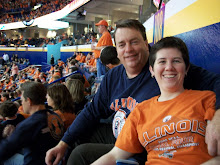I am reposting this article because it's something that we believe that more families could consider supporting, even if they are unable to adopt a(nother) child.
http://www.laurachristianson.com/laura/down-syndrome-adoption-q-a/
Down Syndrome Adoption Q & A in Down Syndrome Adoption
Today we continue our visit with Andrea Roberts, executive director of Reece’s Rainbow Down Syndrome Adoption Ministry (to acquaint yourself with Reece’s Rainbow, please read my previous post, “Adopting a Child With Down Syndrome”).
Laura Christianson: Reece’s Rainbow helps families adopt children who have Down syndrome. Your focus is on international adoption. Do you help with domestic, U.S. placements, as well?
Andrea Roberts: There are almost 200 families who are “paper ready” and on a waiting list to adopt domestic children with Down syndrome. Robin Steele, who works with the Down Syndrome Association of Greater Cincinnati, is the point person for all domestic adoptions. She is also in touch with a lot of attorneys who can facilitate private, domestic adoptions of children with Down syndrome.
LC: Why does Reece’s Rainbow focus exclusively on international adoptions?
AR: In Central and Eastern European countries alone (including Ukraine, Kazakhstan, Romania, etc., but not Russia), there are more than 1.5 million children who have been abandoned by their families for one reason or another and are living in “public care” (that’s the nice way to put it). If statistically, 1 out of every 733 live births results in a child with Down syndrome, that means at any given time there are 2,046 children with Down syndrome who need families. And that’s just in Europe! Some do not survive because of serious medical complications, lack of medical attention, lack of food, and/or lack of love.
In many of these countries, there is no place in society for children born with Down syndrome. They get dumped in orphanages out of shame and fear. The children with special needs go to the same baby houses until they turn 4; they are then sent to special orphanages for children with physical or cognitive challenges – whoever isn’t perfect gets dumped.
In Russia, these orphanages are closed; once the child is transferred, he or she is no longer eligible to be adopted. In Ukraine, however, children living in those orphanages are eligible to be adopted until they are 16. It’s important that we get these children out of the orphanages before it’s too late. When people become aware of the future they can prevent by adopting one of these children, it motivates them.
LC: What are some other reasons people adopt children who have Down syndrome?
AR: There are two different kinds of people who adopt:
People who have fertility issues and want healthy newborns.
Parents who have a biological child with Down syndrome. They have lived and learned the blessing that these children are.
These children bring more joy than I can describe. Like any child, each child with Down syndrome has his or her own personality and challenges. Families who have had experience with children who have Down syndrome often say, “Give me more of what we’ve got.” We have a family who is in the process of adopting their fourth child with Down syndrome from Colombia.
We are working with three other families who do not have a child with Down syndrome. They simply have a heart and a calling, so they are taking a leap of faith.
Some families are special education teachers. They spend a lot of time with these kids and say, “I want one of my own.”
So there are lots of different scenarios, but the families who adopt have the same heart—they understand what these children bring to the world.
LC: What are some of the challenges of parenting a child with Down syndrome?
AR: Down syndrome is a condition also known as Trisomy 21. It’s caused by an extra copy of all or part of chromosome 21. That causes different issues, in varying degrees, with different children. Yes, you need to get therapy for your child and find special ed classes. You live a different lifestyle, but you adjust.
LC: How are you working with social service agencies in other countries to make it easier for families to adopt children with Down syndrome?
AR: More people would adopt if they could afford it and if they didn’t have to spend six weeks in-country. Most people who adopt children with special needs already have multiple children at home, with or without special needs. The travel requirements prohibit many from making the choice to adopt internationally. We’re reaching out to social services in these countries to encourage them to modify the adoption process or the required time parent has to spend in-country.
LC: Explain your Child of the Month project.
AR: On the first day of every month, one child who is in exceptional need of a family is featured as the Reece’s Rainbow Child of the Month. People can donate $10 a month to go into the adoption grant fund of each child of the month. $10 may not seem like it would make a difference, but collectively, it does.
LC: Tell us about your Yahoo! Group.
AR: The Reece’s Rainbow Yahoo! Group currently has 108 members and is used to keep people abreast of new waiting children and to make announcements about new programs. Many wonderful supporters have joined our Yahoo! group.
LC: How can people contact you for more information?
AR: Visit www.reecesrainbow.com, donate by check to Reece’s Rainbow, PO Box 2055, Dacula, GA 30019-9998, or e-mail Andrea Roberts at bamaroberts@comcast.net.
For more news and information about adoption, visit www.laurachristianson.com, andcheck out my ExploringAdoption bookstore.
Subscribe to:
Post Comments (Atom)


No comments:
Post a Comment